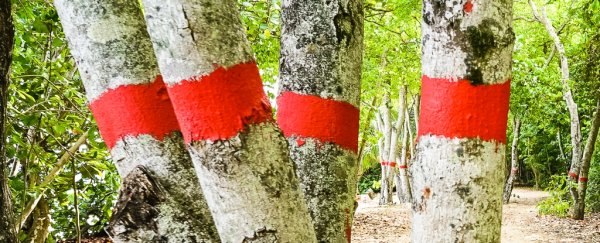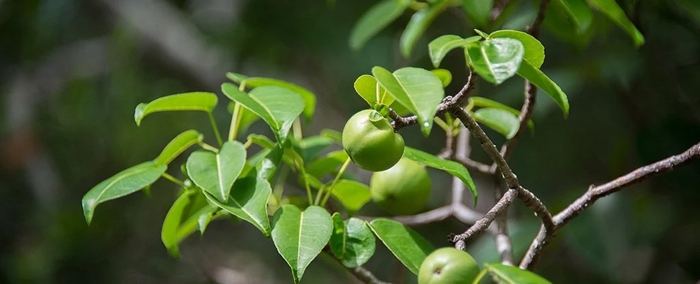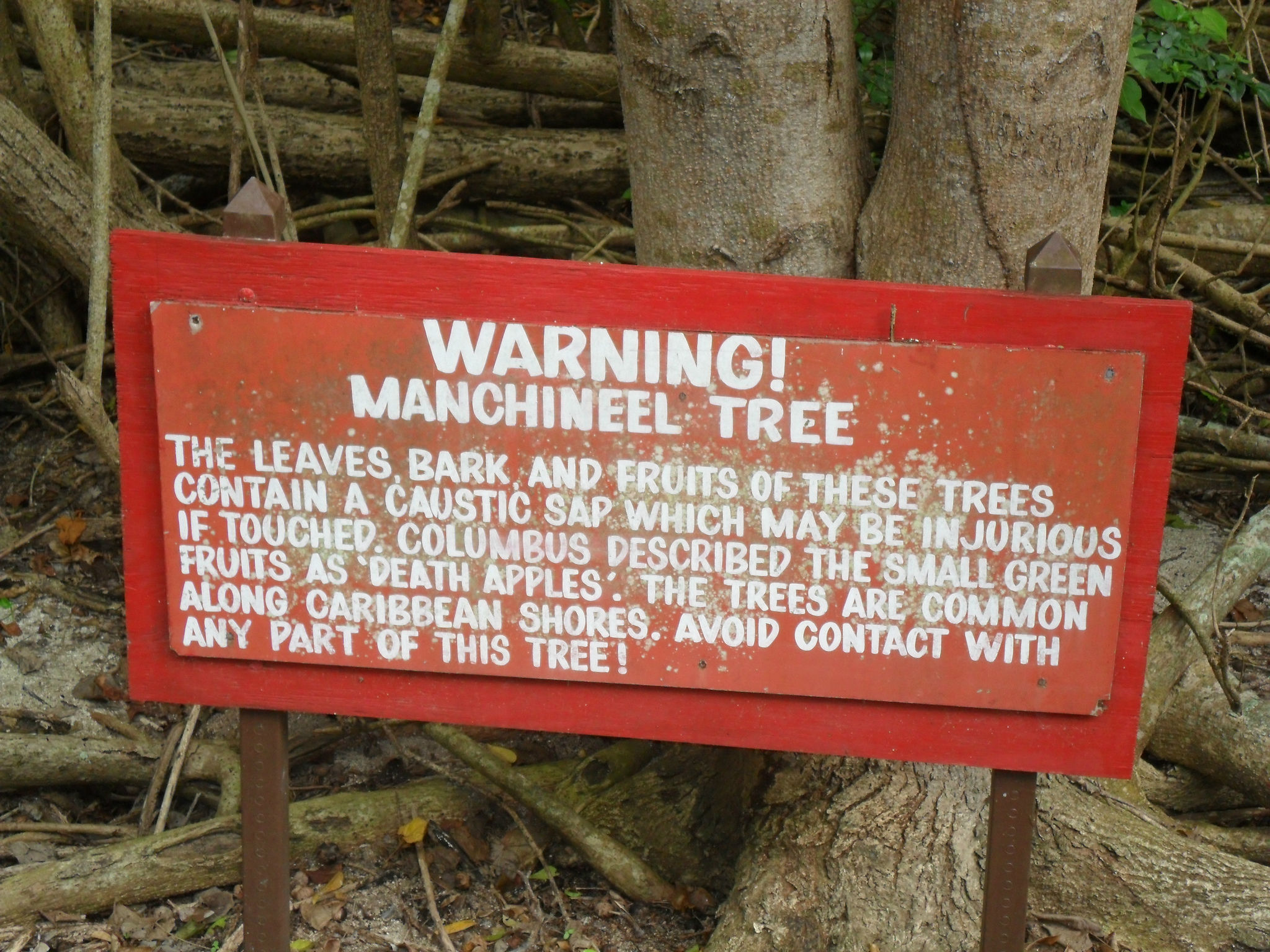Tree Of Death
- Get link
- X
- Other Apps

This 'Tree of Death' Is So Toxic, You Can't Even Stand Under It When It Rains
In 1999, radiologist Nicola Strickland went on a holiday to the Caribbean island of Tobago, a tropical paradise complete with idyllic, deserted beaches.
On her first morning there, she went foraging for shells and corals in the white sand, but the holiday quickly took a turn for the worse.
Scattered amongst the coconuts and mangoes on the beach, Strickland and her friend found some sweet-smelling green fruit that looked much like small crabapples.
Both foolishly decided to take a bite. Within moments the pleasantly sweet flavor was overwhelmed by a peppery, burning feeling and an excruciating tightness in the throat that gradually got so bad, the women could barely swallow.
The fruit in question belonged to the manchineel tree (Hippomane mancinella), sometimes referred to as 'beach apple' or 'poison guava'. It's native to the tropical parts of southern North America, as well as Central America, the Caribbean, and parts of northern South America.
 (Karuna Eberl/Shutterstock)
(Karuna Eberl/Shutterstock)
The plant bears another name in Spanish, arbol de la muerte, which literally means "tree of death". According to the Guinness World Records, the manchineel tree is in fact the most dangerous tree in the world.
As explained by the Florida Institute of Food and Agricultural Sciences, all parts of manchineel are extremely poisonous, and "interaction with and ingestion of any part of this tree may be lethal".
Manchineel belongs to the large and diverse Euphorbia genus, which also contains the decorative Christmas poinsettia. The tree produces a thick, milky sap, which oozes out of everything – the bark, the leaves, and even the fruit – and can cause severe, burn-like blisters if it comes into contact with skin.
That's because the sap contains a range of toxins; it's thought that the most serious reactions come from phorbol, an organic compound that belongs to the diterpene family of esters.
Because phorbol is highly water-soluble, you don't even want to be standing under a manchineel when it's raining – the raindrops carrying the diluted sap can still severely burn your skin.
 (arctic_whirlwind/Flickr)
(arctic_whirlwind/Flickr)
Because of these horrifying properties, in some parts of the tree's natural range they are painted with a red cross, a red ring of paint, or even paired with explicit warning signs.
You'd think humans could just remove the trees, but they actually play a valuable role in their local ecosystems – as a large shrub, the manchineel grows into dense thickets that provide excellent windbreaking, and a protection against coastal erosion on Central American beaches.
There have been reports of severe cases of eye inflammation and even temporary blindness caused by the smoke of burning manchineel wood – not to mention the effects of inhaling the stuff.
However, Caribbean carpenters have been using manchineel wood in furniture for centuries, after carefully cutting it and drying in the sun to neutralize the poisonous sap.
"The real death threat comes from eating its small round fruit," Ella Davies writes for the BBC. "Ingesting the fruit can prove fatal when severe vomiting and diarrhea dehydrate the body to the point of no return."
Fortunately, Strickland and her friend lived to tell the tale, because they only ate a tiny amount of death apple. In 2000, Strickland published a letter in The British Medical Journal, describing her symptoms in detail.
It took over eight hours for their pain to slowly subside, as they carefully sipped pina coladas and milk. The toxin went on to drain into the lymph nodes on their necks, providing further agony.
"Recounting our experience to the locals elicited frank horror and incredulity, such was the fruit's poisonous reputation," Strickland wrote. "We found our experience frightening."
A version of this article was first published in January 2016.
- Get link
- X
- Other Apps
Comments
Post a Comment